‘Ermenilerin neden Romanya'da yaşadığını anlamak benim için elzemdi’

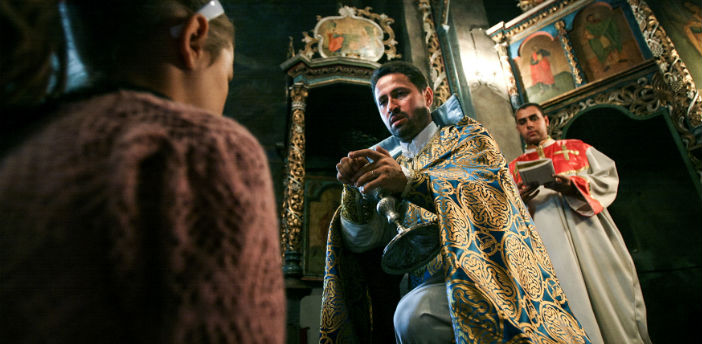
Deneyimli foto muhabiri Romanyalı Andreea Tanase, ülkesindeki Ermeni topluluğun tarihinde çıktığı yolculuğu, dünden bugüne soykırımın izlerinin belgelendiği özel bir çalışmaya dönüştürdü.Tanase’nin ‘Romanya'daki Ermeniler’ projesi; röportajlar, kitap lansmanları ve fotoğraf sergileriyle Bükreş, Kaloşvar, Yerevan ve Gümrü'de tanıtıldı. "Romanya'daki Ermeniler" projesinden bir fotoğraf ‘Diasporalar Avrupası’nın düzenlediği uluslararası yarışmada birinci oldu ve aynı projeden iki fotoğraf da "Diasporalar Avrupası" konferansı sırasında Avrupa Parlamentosu'ndaki fotoğraf sergisinde yer aldı. Başka halkların ve farklı insanların hikâyelerine duyulan samimi merakla başlayan ve giderek mesleki bir tutkuya dönüşen bu çalışmayı, fotoğrafçılığın tarihi ve bugünü kaydetme gücünü Andreea Tanase’nin kendisinden dinledik.
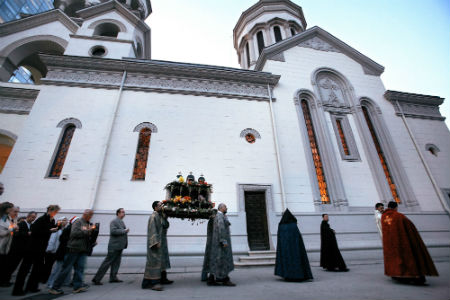
Küçük bir topluluk olan Romanya'daki Ermenilerle ilk olarak nasıl karşılaştınız?
Neden Ermeni toplumunu çekmeyi seçtiğim sık sık soruluyor. İtiraf etmeliyim ki Ermeni Soykırımı'nı sonradan öğrendim. Ve bunu olması gerektiği gibi tarih kitaplarından değil, bir rock grubu olan System of a Down'ın şarkı sözlerinden öğrendim. Bu benim için bir dönüm noktası oldu ve soykırım hakkında okumaya başladım. Romanya'daki Ermenileri çekmek ve onlar hakkında bir hikâye yaratma fikri böyle oluştu. Bu proje zamanla gelişti; ülkemdeki Ermeni toplumunun ne kadar güçlü olduğunu ve Romanya'nın ekonomik, toplumsal, siyasi ve kültürel hayatına ne kadar büyük etkileri olduğunu da böylece anlamış oldum. Ülkemdeki pek çok önemli şahsiyet Ermeni kökenli. Transilvanya'da orijinal adları Gherla ve Armenopolis olan, Dumbraveni (Elisabetopol) ve Frumosa adında iki Ermeni kasabası var. Ayrıca Gheorgheni'de de önemli bir Ermeni nüfusu vardı. Başlıca ticaret rotalarının kesiştiği Moldova'da da Ermeniler özellikle ticaret alanında çok etkiliydi. Moldova hükümdarlarından biri olan III. John Ermeni kökenliydi. 19. yüzyılın başlarında önemli bir iş adamı, hancı ve diplomat olan Manuc Bey de Ermeniydi. Daha sonra Ermeni Katololikosu I. Vazken olan Vazken Balgian Bükreş'te doğmuştu. Günümüzde önemli siyasetçiler olan Varujan Vosganian ve Varujan Pambuccian da Ermeni kökenli. Romanyalılar, sık sık Makedonyalılar veya Arnavutlarla karıştırdıkları Ermeniler hakkında çok az şey biliyor. Ders kitaplarında Ermenilerle ilgili çok az bilgi var ve Ermeni Soykırımı'ndansa ya çok az bahsediliyor ya da hiç bahsedilmiyor. Bu nedenle bu topluluğu çekmeyi seçtim ve Ermeniler ve Ermeni Soykırımı'ndan bahsetmek benim için bir öncelik haline geldi.
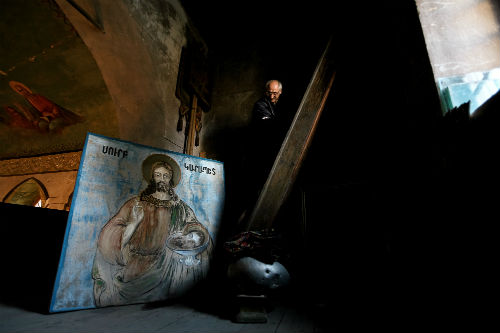
Romanya'daki Ermeni topluluklarına ulaşmak kolay oldu mu? Bağlantıları nasıl kurdunuz? Fotoğraf çekmek için çok seyahat ettiniz mi?
Bu belgesel için Romanya, Moldova, Bulgaristan ve Ermenistan'da 16 kasaba gezdim. Fotoğraf çektim, söyleşiler yaptım, kitaplara ve arşivlere baktım. Kitabım sadece fotoğraflardan oluşmuyor, ayrıca röportajlar ve tarihi referanslar da var. Basit bir fotoğraf albümü değil; görüntülerle metinleri birleştiren bir belgesel niteliğinde. Aslında ben şu ifadeyi daha çok seviyorum: metinlerin fotoğraflardan akması. Ermeni dergisi Ararat’ın genel yayın yönetmeni Mihai Stepan-Cazazian belgeleme sürecinde büyük katkıda bulundu. Topluluk konusunda bilgilerin çoğunu temin eden, ülkedeki toplum liderleriyle beni iletişime geçiren oydu. Projenin en büyük destekçilerinden biri olan Cazazian'a minnettarım. Onun referansı birçok topluluğa girmemi kolaylaştırsa da her zaman işe yaramadı. Romanya'daki Ermeni nüfusu, özellikle de yaşça büyük olanlar, hâlâ tüm yabancılardan, bilhassa da gazetecilerden korkuyor. Bu, komünizm döneminden kalan dehşet psikolojisinin bir kalıntısı. Birçok kez şüpheyle karşılandım ve kimi zaman da röportaj yapmama veya bazı şeyleri fotoğraflamama izin verilmedi. Bazı toplulukların hikâyesini tamamlayabilmek için ikinci kere gitmem gerekti. Gazeteci yaklaşımımı herkes anlamadı ve neden topluluklarını bu kadar uzun süre fotoğraflamam gerektiğine anlam veremediler. Fakat kaliteli bir belgesel bir gecede bitirilmez, zira topluluğu tanıyıp anlamak ve hikâyelerini gün yüzüne çıkarmak zaman alır.
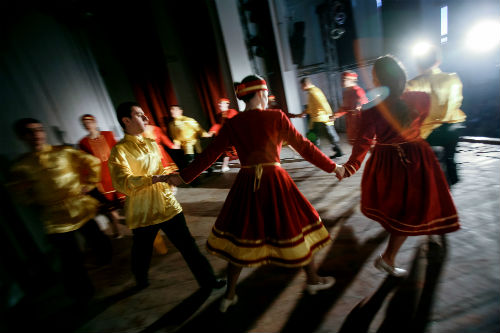
Neden bu hikâyeyi anlatma gereği hissettiniz? Sadece ‘insani bir merak’ mıydı, yoksa bunu ‘sorumlu bir fotoğrafçılığın’ gereği olarak mı gördünüz?
Aslında bu soruyu bir miktar cevapladım ama ekleyeceğim önemli bir şey daha var. Az bilinen bir konuyu öğrenen her gazeteci bu konuda konuşmak ister. Önemini kavradığınızdaysa bunu belgeleme arzusu daha da şiddetlenir. Kişisel merak mesleki ilgiye dönüşür ve gazeteci kamuoyu için önemli ve ilgi çekici olduğunu düşündüğü hikâyeleri keşfetmeye başlar. Bir gazeteci, insanların belgelediği durumlara dair algısını her zaman değiştiremeyebilir, ama en azından ilgilerini çekip hakkında çok az şey bildikleri veya hiçbir şey bilmedikleri bir meseleyi onlara anlatabilir. Bu çapta bir belgeselde, tanıdığın ve hikâyelerini dinlediğin insanlardan etkilenmemek neredeyse imkânsız. İster yazsın ister fotoğraflasın, bir gazeteci çalışmasına her zaman kişisel bir renk katar, bu rengin ne kadar yoğun olacağı da kişiden kişiye değişir. Bir meseleyi sunarkan faydalanılan vizyon, hem bu renge hem de gazetecilik deneyimine dayanır.
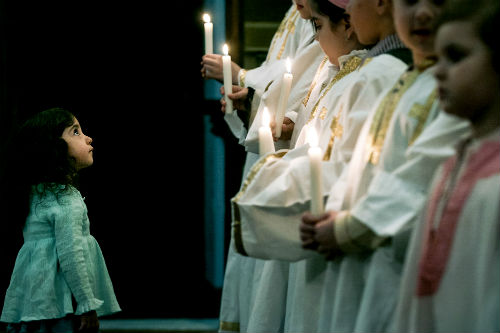
Mensubu olmadığınız bir topluluğun trajik tarihini anlama ihtiyacını neden hissettiniz? Bunun, gerçeği aramak ve sessiz kalmamak meselesiyle nasıl bir bağlantısı var?
Tarihimizi bilip anlamanın ve tüm kötü anlarıyla kabullenmenin çok önemli olduğunu düşünüyorum. Bir milletin yaşadığı soykırım gibi bir trajedi hepimizi etkiliyor ve ilgilendiriyor. Ermenilerin neden Romanya'da yaşadığını bilmek ve anlamak elzem. Benim ülkem, soykırım sırasında göçmenleri almak için kapılarını açan ilk ülkelerden biri. Bu politikanın sonucu olarak ülkenin yasaları ve etnik toplulukların yapısı değişti.
Kitabımın okurlarından biri şu an New York'ta yaşayan bir Ermeni. Kitabı alan insanları tanımayı ve mümkünse onlara böyle belgesel nitelikte çalışmalara neden ilgi duyduklarını sormayı seviyorum. Kitabımın Ermeni Soykırımı'yla ilgili kısmı, 1923'te Köstence Limanı’na varan 198 çocuk göçmenin hikâyesini anlatıyor. Bu çocuklar birkaç yıl boyunca Bükreş'ten 365 km uzakta bulunan Strunga'daki bir yetimhanede kalmışlar. Bu çocukların fotoğraflarını ve bilgilerini içeren kayıtlar hâlâ duruyor ve internet üzerinden ulaşılabilir. (https://issuu.com/norghiank/docs/catalog_mic_/1?e=1148580%2F12158753). Bu kaydı New York'ta yaşayan o kişiye yolladım ve şöyle bir cevap aldım: “Babam Hrant Hovnanian 20. sayfadaki 118 numaralı çocuk. Ve fotoğrafın yanında da Ermenice, 'Orijinal fotoğraf New York'a gönderilmiştir' yazıyor. Küçük erkek kardeşi Püzant sayfa 11'deki 49 numaralı çocuk. Bükreş'te ölmüş ve oradaki Ermeni mezarlığına gömülmüş. En küçük erkek kardeşleri Vahram 4 sayfada, numarası 21. O da Püzant'la aynı kaderi paylaşmış. Büyük erkek kardeşi Krikor, Strunga'da değildi ama kendine bir hayat kurmak için büyükannesiyle Bükreş'te kaldı.”
Bence bu hikâye gazeteci yaklaşımının önemini ve rolünü vurguluyor. Ayrıca geçmişi unutmamamız gerektiğini, bugünün bir parçası olduğundan daima hatırlayıp anlamak zorunda olduğumuzu da ortaya koyuyor. Hrant Dink öldürüldüğünde, herkesin Ermeni Soykırımı'nın yüzyıl önce bitmediğini, hâlâ sürdüğünü anladığını zannetmiştim. Ne yazık ki döngüsel bir yapısı olan tarih kendini tekrarlıyor ve böyle trajediler gözlerimizin önünde yaşanmaya devam ediyor. Geçmişteki hatalardan bir şeyler öğrenip öğrenemeyeceğimizi bilmiyorum ama bunları konuşmak gibi bir görevimiz var.
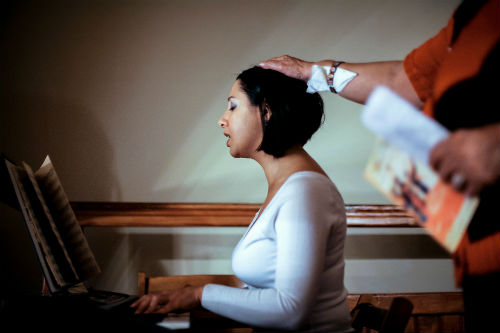
Serginin hazırlık süreci nasıl geçti?
Bükreş'teki Köy Müzesi (Muzeul Național al Ţăranului Român) 2015'te Ermenilerin resimlerini ve eşyalarını sergiledi. Organizatörler bu sergiyi soykırımın 100. yıl anmalarının bir parçası olarak için düzenlemişlerdi ve sergiyi yaygınlaştırmak için çabaladılar. ‘Romanya'daki Ermeniler’ kitabımdan fotoğraflarla bir sergi açmamı istediler ve bana sergi için bir oda verdiler. Açılıştan bir gün önce organizatörlerden biri beni arayarak, Romanya'daki Türkiye Büyükelçiliği'nin müdahalesinin ardından Romanya hükümetinden birinin onlara ulaştığını ve resim açıklamaları da dahil soykırıma yapılan tüm göndermelerin değiştirilmesi gerektiğini söyledi. Fotoğrafların bazıları Yerevan'daki Soykırım Anıtı'nda çekilmişti. Bu bir yandan telif haklarımı ihlal ediyor, bir yandan da ifade özgürlüğümü kısıtlıyordu. O sırada bu karara müdahalede bulunacak durumda değildim, çünkü 100. yıl anmalarını çekmek üzere Ermenistan'da bulunuyordum. Daha sonra bir sürü sorun yaratan bu kararla ilgili konuştum ama esas sorun yaşayanlar ‘açıklama’ yapmak üzere büyükelçiliğe çağrılan organizatörlerdi. Keşke elimden daha çok şey gelseydi. Fakat bir avukatla görüştükten sonra anladım ki, arkamda bir destek olmadan yetkililere açacağım bir davayı kazanma ihtimalim yoktu.
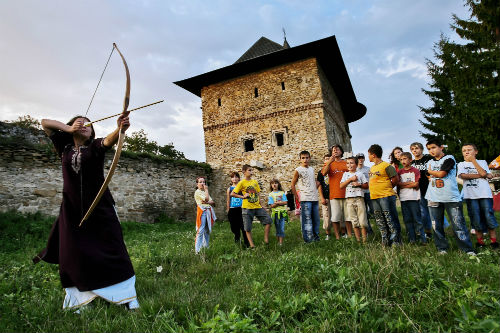
Bu proje üzerinde çalışırken karşılaştığınız hoş veya tatsız sürprizler oldu mu? Anlatılacak anekdotlarınız var mı?
Seyahatlerim sırasında birçok ilginç insan ve güzel hikâyeyle karşılaştım. Konuştuğum herkesin kaderi bir şekilde Ermeni Soykırımı'na bağlanıyordu. Hikâyelerden çoğunda hüzün ve nostalji vardı ama Romanya'da konuştuğum bütün Ermeniler, kendilerine onurlu bir kader çizme imkânı veren ve onlara bir ev sağlayan bu ülkeye minnettar olduklarını söyledi. Romanya'da Ermenistan'a hiç gitmemiş ama gitmenin hayalini kuran Ermeniler var. Romanya'da doğup şu an Ermenistan'da yaşayan Ermeniler de var; çocukluklarının sokaklarında muhayyel seyahatlere çıkıyorlar. Kitabımda Transilvanya'daki Frumosa köyünden bir Ermeni'nin hikâyesi var; dilini unutmamak için her gün Ermenice yazıp okumuş. Ermenice Transilvanya'da yok olmuş durumda, çünkü Ermenice konuşan çok az insan var orada. Ayrıca Transilvanya'daki Dumbraveni kasabasındaki bir Ermeni kilisesinde çalışan bir rahip kalbinin kilisede kalmasını istemiş ve vasiyeti yerine getirilmiş.
Seyahat ve basım masraflarını nasıl karşıladınız? Size kapılarını açanlar oldu mu, yoksa insanları sizi desteklemeye ikna etmek zorunda mı kaldınız?
Basım da dahil, tüm masrafları kendim karşıladım. İçerik açısından mümkün olduğunca bağımsız olmak ve başkasının bakış açısının baskısını yaşamadan hikâyeyi, kendi keşfettiğim şekliyle sunmak istedim. Bu kitabı bastırabilmek için maddi ve manevi birçok fedakârlıkta bulundum, ama şu an bunları konuşmanın sırası değil. Konforumu bir kenara bırakıp çevremdeki insanlara yakından bakmayı çok önemli bulduğumdan bunu yapmaya karar verdim. Umarım insanlar da kitabım aracılığıyla başkalarını tanımanın ve tarihi öğrenmenin ne kadar önemli olduğunu anlar.
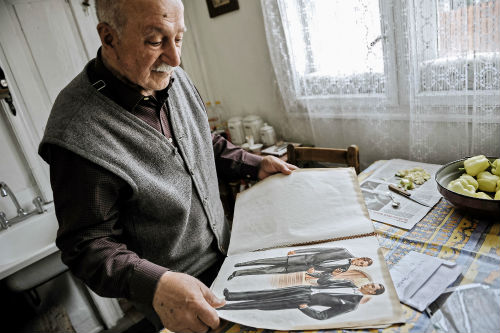
Belgesel fotoğrafçılığının ve genel olarak fotoğrafçılığın Romanya'daki durumu nedir?
Her yerde olduğu gibi Romanya'da da foto muhabirliğine veya belgesel fotoğrafçılığına yönelik ilgi oldukça az. Romanya'da çok başarılı belgesel projeler yapıldı ama bu tip işler pek ciddiye alınmıyor. Bu gibi çalışmalar ok fazla zaman ve para gerektiriyor ve sponsor bulmak da kolay değil. Meslektaşlarımın çoğu başka işlerden para kazanıp bunu projelerini gerçekleştirmek için kullanıyor. Fakat zorluklarına ve sorunlara rağmen bunu yapmak isteyen insanların olması çok güzel. Çoğu zaman bu işi bırakmak isteseler de devam edecek gücü bulabiliyor olmaları çok değerli. Dünyamızı belgelemek bizler ve gelecek nesiller için hayati önem taşıyor. Etrafımızda olan şeylere gözlerimizi kapamamalıyız, çünkü tarihi gerçekleri çarpıtmak isteyenlere karşı mücadele etmek zorundayız.
Kitap Romanya'daki Ermeniler hakkında olsa da tüm Moldova ve Ermenistan'ı gezdiniz. Bu deneyim sizde daha çok şey keşfetme istediği uyandırdı mı? Mesela diaspora Ermenilerini… Hatta belki de Türkiye'deki Ermenileri… Gelecek planlarınız neler?
Bana göre fotoğrafçılık veya foto muhabirliği bir iş değil, bir yaşam tarzı. Projelerime sponsor bulmak zor olsa da umarım bunu yapmaya devam edebilirim. Keşke dünyanın diğer yerlerindeki Ermeni topluluklarını belgeleme imkânım olsa. Ayrıca, tarihi Ermenistan'dan kalan tüm anıtları da fotoğraflamak isterdim. Hemşin Ermenileriyle tanışıp, II. Dikran'ın kurduğu Tigranakert şehirlerinin yıkıntılarını çekmek isterdim. Avrupa'daki Süryani topluluğuna dair büyük ilgim var ve umarım yakın zamanda onlarla ilgili bir proje yapabilirim. Aramice konuşan modern toplulukların ilham verdiği eski bir proje bu. Bu sene başlayacağım bir diğer büyük projeyse doktora tezim. Konusu, Ermeni Soykırımı sırasındaki fotoğrafçılık çalışmaları.
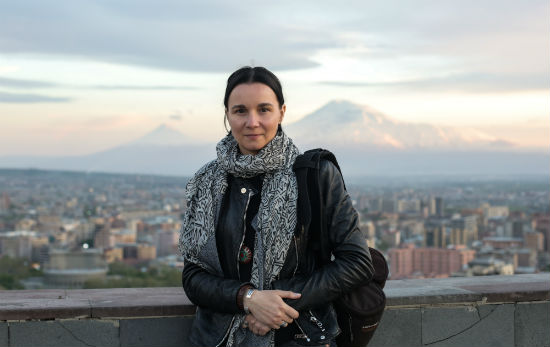
Fotoğrafa adanmış bir hayat: Andreea Tanase
15 yıldır foto muhabirliği yapan Andreea Tanase, Bükreş Üniversitesi'nde İletişim ve Halka İlişkiler öğrenimi gördükten sonra New York Fotoğraf Enstitüsü'nden mezun oldu. Bükreş'teki Bağımsız Gazetecilik Merkezi'nin seminerlerini tamamlayan Tanase’nin Bükreş'teki İstihbarat Akademisi'nde (Mihai Viteazul) Terörle Mücadelede Bilgi Yönetimi üzerine yüksek lisans tezi bulunuyor.
Haberlerden toplumsal olaylara ve belgesel fotoğrafçılığına kadar pek çok konuda çalışan ve her alanda Romanya'daki hayatı ve kültürü keşfeden fotoğrafçı, Romanya'daki başlıca gazetelerin yanı sıra, aralarında National Geographic Romanya, Geo Romanya, Foreign Policy Romania, British Photo Agency, Intact Images, Ostphoto, Amnesty International Journal, Ararat Dergisi, Die Welt, Die Tageszeitung or Die Presse gibi yayınların da bulunduğu pek çok dergi ve fotoğraf ajansıyla iş yaptı.
(çeviri: Cansen Mavituna)


